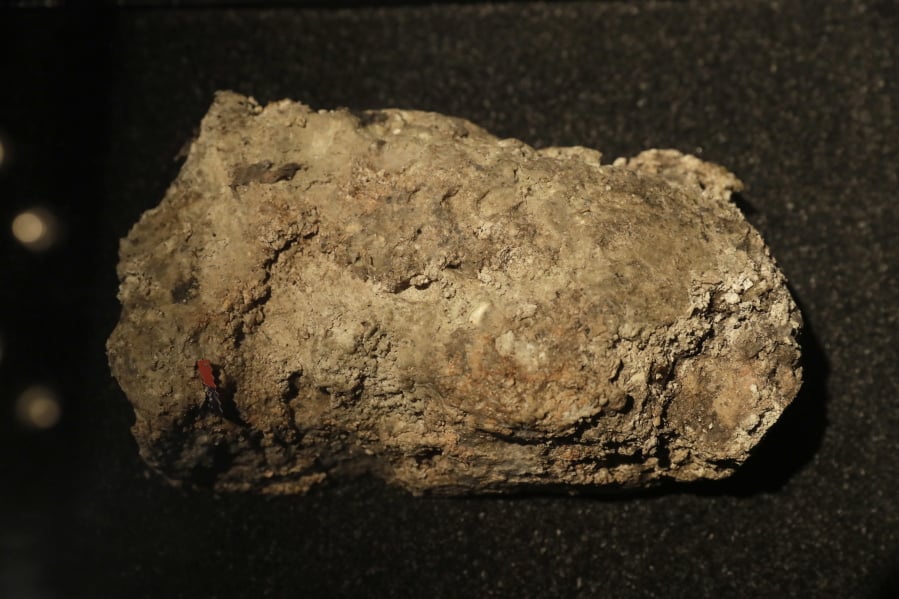LONDON — The Mona Lisa it is not.
But the new “Fatberg!” exhibition in central London is nonetheless drawing attention for its own special reasons. The latest attraction at the Museum of London is rocklike, repugnant and revolting. It also has tiny bugs living on it.
Chunks from the 143-ton fatberg found in London’s aging sewer system went on display at the Museum of London on Friday, retelling the story of how sewer workers tackled a massive blob of waste – using jet hoses, pickaxes, spades and shovels.
The giant blob, discovered last September in the Whitechapel area of east London, garnered international attention. It took nine weeks to dismantle the congealed clump of grease, wet wipes, condoms and other icky items.
It may have been compelling, in a I-don’t-want-to-look-but-can’t-help-it sorta way, but the sight of the advancing detritus clogging up the sewers wasn’t pretty.
Not that it stopped the Museum of London from wanting to get their (gloved) hands on a few samples.
“A fatberg has long been on the Museum of London wishlist. We want to reflect the highs and lows of city living,” said curator Vyki Sparkes.
Fatbergs are “gross, but strangely compelling,” she added.
They are also a major problem in the British capital, which has a Victorian sewer system that has struggled to cope as the city’s population has increased. The British utility company Thames Water spends about 1 million pounds ($1.4 million) a month fighting the fatbergs that are lurking in the pipes and tunnels beneath the people’s feet, many located in areas of London with restaurants that pour cooking oil down the drain. If fatbergs aren’t removed, they can cause sewer overflows.
It’s not just a London problem, of course. Last fall, a 20-foot fatberg was dislodged from the sewers in Baltimore.
But London may be the first city to encase samples of sewage in perspex viewing boxes and then invite people round to check it out.
Sparkes says that part of the reason fatbergs have captured the public imagination is down to the name, for which we can thank London sewer workers. They coined the term “fatberg,” which entered the Oxford English Dictionary in 2015.
“People can really visualize that it’s like a giant iceberg but made of fat,” Sparkes said.
It’s not all doom and gloom. The display reveals that some of the fatberg was converted into biodiesel that helps to run London buses.
The samples on display, which were air-dried, look like clumps of moonscape or a small asteroid. But lean in and you’ll see a tiny piece of a Double Decker chocolate bar wrapper poking out of one grayish blob. Lean in even closer and you’ll see the small flies that hatched when the samples were in quarantine.
“You can see flies walking along and crawling – it’s like it has its own pets,” said Sparkes, who added that “this is almost like a live experiment.” She says she doesn’t know what the exhibition will look like at the end of its run in July. “It’s attracting flies, it’s changing. It definitely looks a lot different from when we got it a few months ago. The sample that air dried faster has crumbled into parts.”
Thames Water, the utility company, says it hopes the display will spark a larger conversation about what gets flushed down the drain – particularly things that cause headaches like wet wipes, condoms and sanitary pads.
“We’d like people to realize what they are flushing down the toilet, or pouring down the sink can have an effect. Just because it’s out of sight doesn’t mean it’s gone forever,” said Lee Irving, a Thames Water spokesman.
“We are down in the sewers tackling fatbergs every single day,” he said.



